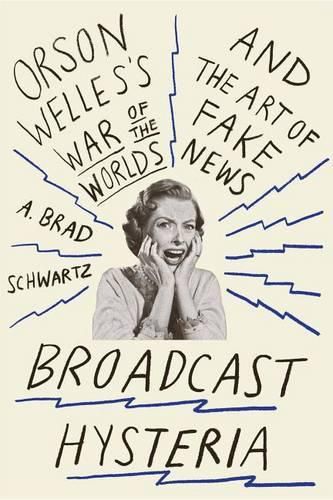Readings Newsletter
Become a Readings Member to make your shopping experience even easier.
Sign in or sign up for free!
You’re not far away from qualifying for FREE standard shipping within Australia
You’ve qualified for FREE standard shipping within Australia
The cart is loading…






On the evening of October 30, 1938, radio listeners across the United States heard a startling report of a meteor strike in the New Jersey countryside. With sirens blaring in the background, announcers in the field described mysterious creatures, terrifying war machines, and thick clouds of poison gas moving toward New York City. As the invading force approached Manhattan, some listeners sat transfixed, while others ran to alert neighbors or to call the police. Some even fled their homes. But the hair-raising broadcast was not a real news bulletin-it was Orson Welles’s adaptation of the H. G. Wells classic The War of the Worlds.
In Broadcast Hysteria, A. Brad Schwartz boldly retells the story of Welles’s famed radio play and its impact. Did it really spawn a wave of mass hysteria, as The New York Times reported? Schwartz is the first to examine the hundreds of letters sent to Orson Welles himself in the days after the broadcast, and his findings challenge the conventional wisdom. Few listeners believed an actual attack was under way. But even so, Schwartz shows that Welles’s broadcast became a major scandal, prompting a different kind of mass panic as Americans debated the bewitching power of the radio and the country’s vulnerability in a time of crisis. When the debate was over, American broadcasting had changed for good, but not for the better.
As Schwartz tells this story, we observe how an atmosphere of natural disaster and impending war permitted broadcasters to create shared live national experiences for the first time. We follow Orson Welles’s rise to fame and watch his manic energy and artistic genius at work in the play’s hurried yet innovative production. And we trace the present-day popularity of fake news back to its source in Welles’s show and its many imitators. Schwartz’s original research, gifted storytelling, and thoughtful analysis make Broadcast Hysteria a groundbreaking new look at a crucial but little-understood episode in American history.
$9.00 standard shipping within Australia
FREE standard shipping within Australia for orders over $100.00
Express & International shipping calculated at checkout
On the evening of October 30, 1938, radio listeners across the United States heard a startling report of a meteor strike in the New Jersey countryside. With sirens blaring in the background, announcers in the field described mysterious creatures, terrifying war machines, and thick clouds of poison gas moving toward New York City. As the invading force approached Manhattan, some listeners sat transfixed, while others ran to alert neighbors or to call the police. Some even fled their homes. But the hair-raising broadcast was not a real news bulletin-it was Orson Welles’s adaptation of the H. G. Wells classic The War of the Worlds.
In Broadcast Hysteria, A. Brad Schwartz boldly retells the story of Welles’s famed radio play and its impact. Did it really spawn a wave of mass hysteria, as The New York Times reported? Schwartz is the first to examine the hundreds of letters sent to Orson Welles himself in the days after the broadcast, and his findings challenge the conventional wisdom. Few listeners believed an actual attack was under way. But even so, Schwartz shows that Welles’s broadcast became a major scandal, prompting a different kind of mass panic as Americans debated the bewitching power of the radio and the country’s vulnerability in a time of crisis. When the debate was over, American broadcasting had changed for good, but not for the better.
As Schwartz tells this story, we observe how an atmosphere of natural disaster and impending war permitted broadcasters to create shared live national experiences for the first time. We follow Orson Welles’s rise to fame and watch his manic energy and artistic genius at work in the play’s hurried yet innovative production. And we trace the present-day popularity of fake news back to its source in Welles’s show and its many imitators. Schwartz’s original research, gifted storytelling, and thoughtful analysis make Broadcast Hysteria a groundbreaking new look at a crucial but little-understood episode in American history.